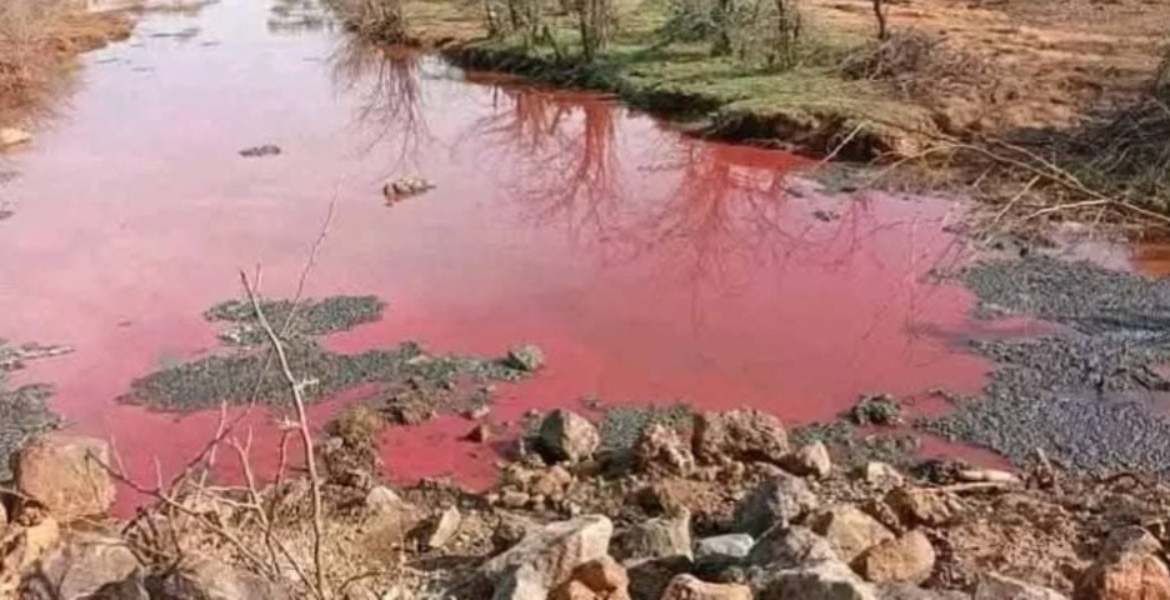Why Lake Bogoria’s Waters Suddenly Turned Red

Residents of Baringo County, Kenya, initially alarmed by a striking red discolouration in a section of Lake Bogoria near the River Waseges inflow, have been reassured by environmental experts who attribute the phenomenon to a natural algae bloom.
The incident, while visually dramatic, prompted immediate concerns among local communities, particularly those displaced by previous flooding, raising fears of an impending ecological or geological crisis. The reddish hue, predominantly observed in the northern part of the lake, spurred speculation and anxiety. Fredrick Kibon, a local resident, says the unsettling sight prompted some to consider evacuation.
"People were genuinely frightened. Many thought something catastrophic was about to happen," he confirmed.
However, experts and wildlife authorities moved quickly to allay these fears, explaining that the colour change is due to a cyclical algae bloom, a known occurrence in the lake’s history. James Kimaru, Senior Warden at Lake Bogoria National Reserve, clarifies that the discolouration arises from the massive bloom and subsequent die-off of algae, often triggered by freshwater influxes.
"This is a cyclical event we’ve observed over the years, particularly during the rainy season when freshwater from rivers like the Waseges enters the lake," Kimaru explains.
He adds that the bloom typically coincides with an increase in flamingo populations, as the algae serve as a vital food source for these birds. The lake's alkaline conditions provide an ideal environment for specific microalgae species, notably Dunaliella salina. Peter Mwangi, an environmental scientist with the Kenya Wildlife Service (KWS), identifies Dunaliella salina as the likely cause of the red pigmentation.
Mwangi elaborates, "Dunaliella salina contains beta-carotene, a red-orange pigment that masks its green chlorophyll. Under specific conditions, this pigment becomes dominant, giving the water its reddish appearance."
Although the visual impact is startling, scientists emphasise that the bloom poses no immediate threat to human or animal life. Water samples have been collected for further analysis to fully understand the microbial activity contributing to the phenomenon. Mwangi notes the potential commercial value of some of the lake’s microbial species, suggesting further study could unlock biotechnological applications.
Dr Oliver Nasirwa, a senior research scientist at the National Museums of Kenya, offers additional insight into the environmental triggers behind the bloom. She says that the algae species in question are highly sensitive to changes in salinity and temperature.
"When freshwater enters the lake, it creates optimal conditions for rapid reproduction. But if salinity levels rise too high, the algae begin to die off, releasing pigments that colour the water," she clarifies.
This balance between growth and die-off underscores the lake’s ecological complexity. It also reflects broader environmental shifts, particularly those linked to climate change. Kimaru observes that reduced rainfall between April and June has diminished algae production this year, resulting in a noticeable decline in flamingo numbers. A recent census recorded only 124,000 flamingos at Lake Bogoria, significantly fewer than in previous years.
The interplay between climate variability, freshwater inflow, and biological responses in the lake highlights the need for ongoing monitoring and adaptive conservation strategies. While the red waters may be a natural occurrence, they serve as a vivid reminder of the lake’s sensitivity to environmental change. Authorities engage local communities to incorporate indigenous knowledge and cultural interpretations of the phenomenon.
"We recognise that the community has its own understanding of these events," Kimaru notes. "By combining scientific research with traditional perspectives, we hope to foster a more holistic approach to environmental stewardship."
Lake Bogoria, a designated Ramsar site known for its geothermal activity and rich biodiversity, remains a vital ecological and cultural landmark in Kenya’s Rift Valley.








Add new comment